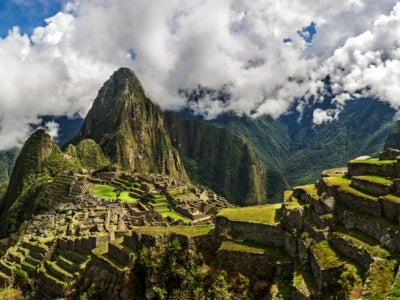
By Catherine McKenna, Minister of Environment and Climate Change, Canada
When you look up at a cloudless blue sky, you might think it goes on forever. And yet, our planet’s atmosphere is actually made up of several layers. One of these, the ozone layer, is among the atmosphere’s most vital components. It acts like a shield, absorbing UV radiation from the sun and protecting us from its harmful effects.
Growing up in Canada in the 1980s, I remember learning that the thinning of the Earth’s ozone layer was one of the most pressing global environmental crises. The world was alarmed after the discovery of a hole in it over the Antarctic, and concerned about its potential health and environmental impacts if it continued to grow.
What we did to fix this problem was remarkable.
Thirty years ago, countries gathered in Canada’s second largest city to sign the historic Montreal Protocol on Substances that Deplete the Ozone Layer. In the years that followed, this became the first treaty in the history of the United Nations to achieve universal ratification by all its member countries – making it one of the most successful, global environmental agreements ever.
The Protocol’s accomplishments over the last 30 years speak for themselves:
- More than 99% of ozone-depleting substances controlled under the Montreal Protocol have been eliminated.
- The ozone layer is on track to full recovery by the middle of this century. Up to 2m cases of skin cancer may be prevented globally each year by 2030.
- Emissions of the equivalent of more than 135bn tonnes of carbon dioxide have been prevented. Savings worth more than $2.2tn (£1.6tn) are expected by the middle of this century in health and economic benefits due to avoided damage to industries such as agriculture and fisheries.
This is an unprecedented, unmatched success story of governments, experts and ordinary people acting to overcome one of the greatest threats the world has faced and to safeguard the Earth’s global commons. And now this combination of science, innovation, and political leadership has inspired a new global effort under the Protocol.
Last October all 197 Montreal Protocol partner countries agreed in Kigali, Rwanda, to phase down hydrofluorocarbons (HFCs). These replaced chemicals in air conditioners, refrigerators and foam products that were harming the ozone layer, but some are potent greenhouse gases hundreds to thousands of times more powerful than carbon dioxide. Phasing down HFCs will help avoid up to 0.5C of global warming by the end of the century, while continuing to protect the ozone layer.
Canada was among the first countries to ratify the Kigali Amendment to the Montreal Protocol. And in the past few days a historic moment was reached when the number of countries doing so reached over 20, enabling the Amendment to enter into force on 1 January 2019.
This is a major development. By phasing down HFC production and consumption under the Montreal Protocol, we will reduce future impacts of climate change worldwide. Fewer HFCs will lessen the economic costs associated with sea level rise, drought, and floods, among other things. The phasedown also supports the key goal of the Paris climate change agreement to keep global temperature rise well below 2C.
The Montreal Protocol remains to this day one of the most successful examples of the world working together to address global environmental challenges. Let’s not forget that although this was an achievement on a super heroic scale, it wasn’t done by one super hero, but by millions of people. We have all been ozone heroes, as a new campaign puts it.
But we cannot stop here. This week Canada is hosting the 30th annual meeting of the Protocol in Montreal. We must ensure a global effort by encouraging more countries to join those who have already ratified it. Bold action will bring real results. By working together we can address climate change, protect the environment, and support economic growth today and for future generations.


